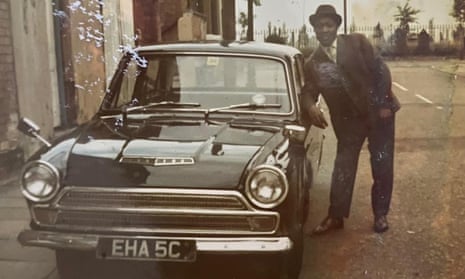Among the challenges faced by the Windrush generation when they arrived to work in Britain in the 1940s, 50s and 60s was the refusal by many banks and building societies to allow them to open accounts, deposit savings or take out loans.
Instead, they set up their own community schemes, based on those that had existed for generations in the Caribbean and elsewhere, that relied on trust.
Now the Bank of England is hosting an exhibition in partnership with Museumand, the National Caribbean Heritage Museum, on “pardner hand” – a collective savings scheme that is still thriving 75 years after the Empire Windrush docked at Tilbury in Essex.
“Britain’s banking system didn’t welcome us as their clients,” said Catherine Ross, who came to England as a seven-year-old in 1958. “The reason why we came was to make money, but we had nowhere to keep it safe. People were forced to keep cash under their mattresses.”
The new arrivals turned to a centuries-old system whereby people banded together in groups for the purpose of saving, known as pardner hand. It was a type of Rosca (rotating savings and credit association), used by people around the world, especially when access to traditional banking services is limited.
Under the system, a group of people agree to save money together over a set period of time, with each individual handing their cash to one of their number for safekeeping. Each week, one “pardner” receives a lump sum made up of that week’s total contributions.
“Trust was a huge factor,” said Ross. “But most people set up pardner hands with people from their island, so you knew who you were involved with.”
Her parents resented their exclusion from the banking system, she said. “We were invited to come to Britain, and we assumed we were wanted and there would be fair play. Instead, we had to work as a community to look after ourselves.”
For her parents, the pardner hands was a lifeline, she said. “But they also used the under-the-bed system.”
The exhibition includes interviews with and photographs of members of the Windrush generation that used pardner hands. Savings were used to fund businesses, buy homes and pay for weddings and funerals.
“Pardner hand is part of the extraordinary contribution that the Windrush generation and their descendants have made to life in the UK,” said Jennifer Adam, the curator at the Bank of England museum.
It is the first in a series of planned exhibitions at the Bank relating to themes of financial exclusion.
after newsletter promotion
Pardner hand is still thriving in communities of Caribbean heritage in the UK, with many schemes run on apps. “It doesn’t matter if it’s only a small amount, it’s good discipline and can make a difference, especially now,” said Linda Burrell, Ross’s daughter.
“It’s good that the Bank of England is telling this story and acknowledging what happened. I hope people will reflect, and understand that financial exclusion is still happening today.”
Pardner Hand: A Caribbean Answer to British Banking Exclusion opens on 22 June at the Bank of England Museum and runs until June 2024
